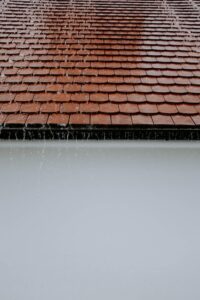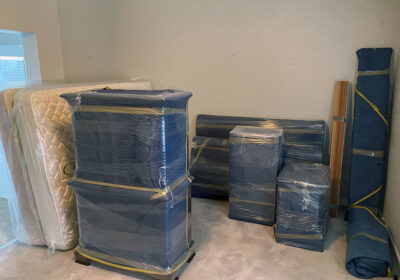 The roof is at least 25 years old
The roof is at least 25 years old
Most asphalt shingle roofs are built to last between twenty and thirty years. It isn’t unusual for families to stretch the life of their roofs an extra ten years or more to save money. In some cases, 40-year-old shingle roofs may still be in good condition. However, replacing the roof is recommended even if it looks good from the ground.
Most experts recommend replacing the roof before it reaches its 30th birthday, even if it appears to be in good condition. Homeowners who live in a development can tell when to change their roof by looking at what their neighbors are doing. If they are starting to replace their roofing, it may be a good time to do so too.
A significant number of shingles are curling
Another way homeowners can notice they need a new roof is by checking whether the singles have started to curl. In general, shingles curl in two different ways. They can cup, which means that the edges start turning upward, or claw, which means that the middle of the shingle starts to come up. In either case, curling often leads to more significant problems, such as weathering and leaks.
There are several reasons why shingles start curling. First, it may be the result of a faulty roof ventilation system. In general, these systems work by pulling in outside air using intake vents often placed in the lower section of the roof. However, when the incoming air is not properly distributed, heat and moisture become trapped in the attic. As a result, the shingles start wearing, fading and curling faster than they should.
Another potential reason why shingles start curling is improper installation. DIY homeowners and technicians must follow certain regulations to make sure shingles are installed properly. When this does not happen, or when new shingles are installed over old ones, high winds can easily curl them. If wind speeds are high enough, shingles may come off entirely instead of curling.
Homeowners who notice curly shingles may want to replace their roofs within five years, depending on how severe the curling is. Mild curling is often harmless, especially when present in only a few shingles. However, if the number of curly shingles is much higher, replacing the whole roof may become unavoidable.
More than a few shingles are missing
Replacing shingles is an effective method to extend the life of the roof. In general, families replace shingles several times before they decide to get a new roof altogether. In general, shingles are sold in bundles that cover around 32 square feet each. This means that only one or two bundles would be needed to replace several damaged shingles. Given that a 2,400 square feet roof would need around 75 shingle bundles to be replaced, families often try and replace as many individual shingles as they can to reduce costs.
Replacing individual shingles, although cheaper, creates another problem later down the road. It is often difficult to find new shingles that match the colors of the old ones. As a result, after several rounds of replacements, roofs may start looking like a checkerboard. This problem is also exacerbated by how shingles lose their color over the years due to weathering. When this happens, it might be inevitable to replace the entire roof to give back the house its original look.
Cracked shingles
Curling is not the only thing that can happen to shingles. In some places, high wind speeds can lead to cracked shingles. In general, homeowners can replace individual shingles just like when they become curly. However, this strategy only works when the number of cracked shingles is low and the affected area is small. If the entire roof has cracked shingles in random places, it might be better to replace the whole roof.
Cracked and missing shingles are among the most dangerous things that can happen to a roof. This is because the lack of shingles can lead to leaks and other significant damages to the entire structure. If the issue is not addressed as soon as possible, a new roof is not the only cost homeowners will have to deal with. To avoid this outcome, most experts recommend replacing the roof three to five years after the number of cracked shingles becomes high enough.
Granule loss
Another sign homeowners can use to determine whether they need a new roof is granule loss. Granules are tiny particles used to cover shingles. Their purpose is to provide additional fire resistance and protection against sun exposure. Without granules, shingles would wear down much faster. In most cases, granules are made of graded crushed rock, porcelain, slate, tile or slag.
Granule loss takes place due to a number of different reasons. The first time homeowners will experience granule loss is when installing a new roof. This is because during manufacturing not all granules are property embedded to the shingles. As a result, a number of granules are dropped during the installation process. In some cases, granules will also drop while the shingle bundles are being shipped.
Some granules do remain attached after installation and accumulate in the gutter shortly after due to high wind speeds or storms. Homeowners should keep an eye out when this happens, as shingles can often lose granules prematurely, especially during rough weather or after a faulty installation. Premature granule loss can also be caused by poor-quality asphalt. In general, the rate at which granule is loosened from the shingles will depend on product quality and weather.
However, granule loss does not become a significant problem until after fifteen to twenty years have passed. This is because the bond between the granule and underlying asphalt weakens, causing them to be loosened and deposited into the gutter. Granule loss can also lead to some aesthetic problems, such as the presence of moss or algae where the granules used to be. After twenty years, the roof has released so many granules that it no longer protects the home against leaks and other hazards. When that happens, homeowners should get ready to replace the roof in around five years.



